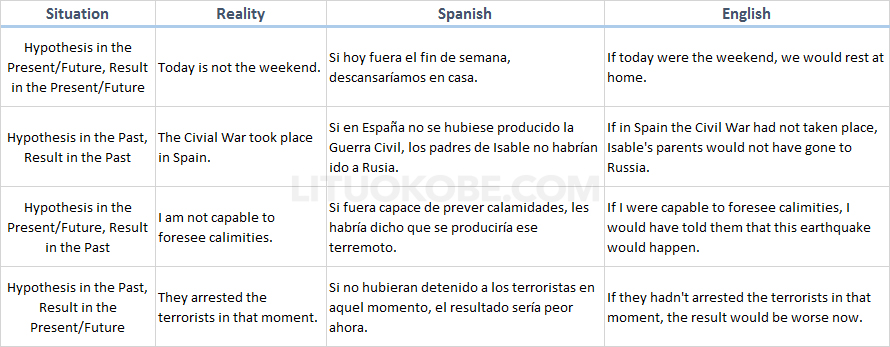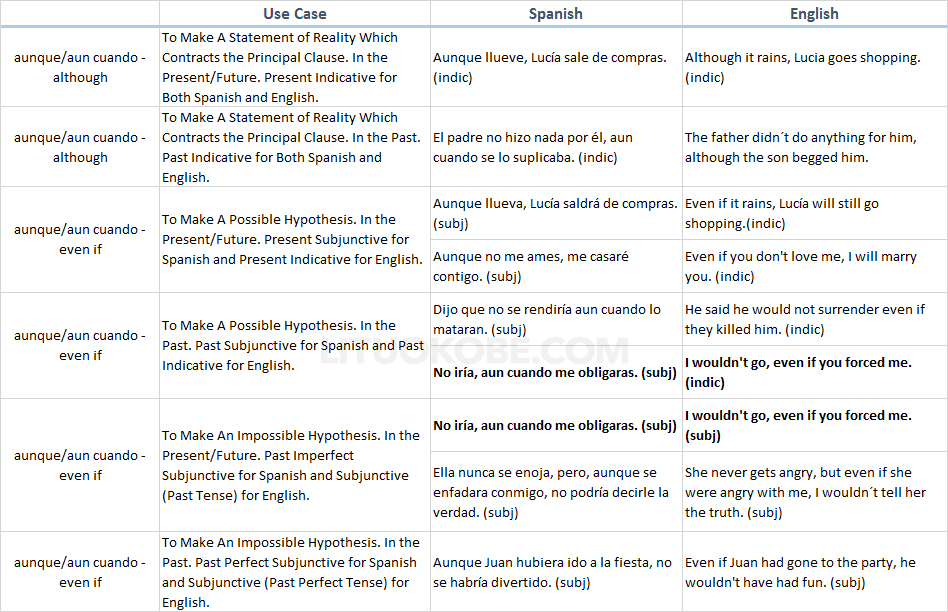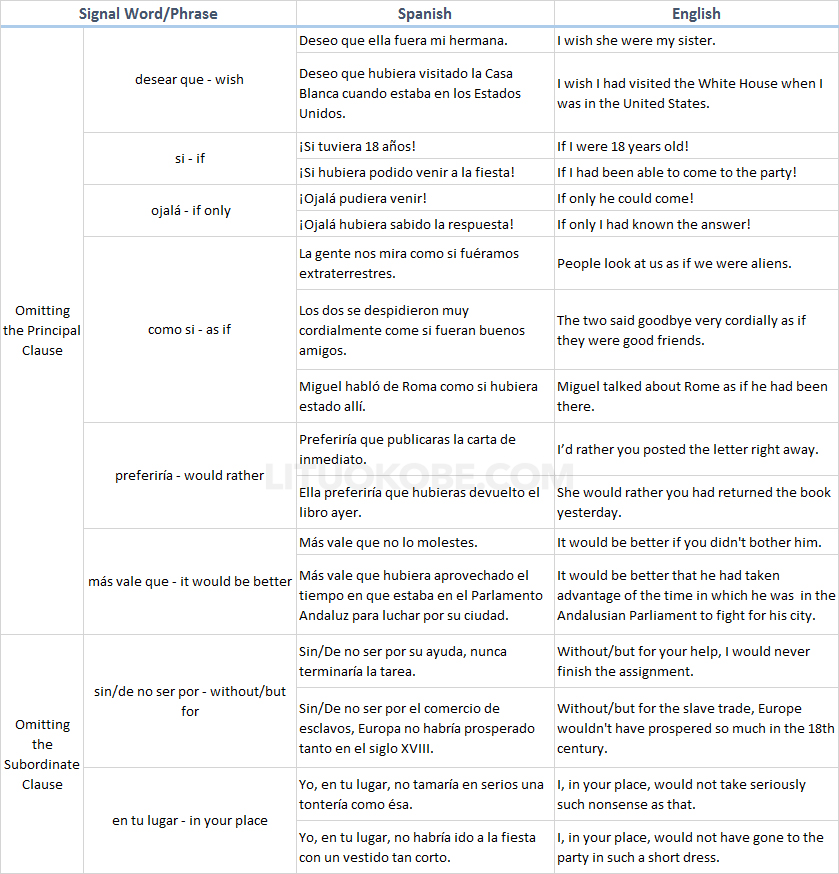
Preface
In linguistics, grammatical mood (a.k.a. mode) is how speakers express their attitude toward what they are saying by using different verbal inflections. This grammatical feature is found in most of the fusional languages which are widely spoken in Europe and Middle East, but rarely exists in the analytical languages whose usage is majorly in East Asia.
Consequently, as a native Chinese speaker, I encountered great difficulties in understanding the moods, especially the subjunctive one when I was learning English in middle school, and there were no better ways than rote learning to get things done. Until recently, I start to discover the logic of the subjunctive mood under the hood after having learnt Spanish for a couple of months.
Compared to its counterpart in English, the subjunctive mood in Spanish has a system more complicated, yet more integrated, which means the knowledges are tightly connected with each other. On the other hand, the English subjunctive mood is a simplified version with less content, and accordingly fewer connections, which is technically more challenging for analytical language speakers to understand.
Indeed, the English language, many of whose inflectional features are not well preserved as those in Spanish which is much closer to Classical Latin, has been evolving towards an analytical language for a long time, and the subjunctive mood is just one of these features. I would like to, hereby, compare this mood in both languages, to reinforce what I learnt. You may find it helpful if you are struggling with the subjunctive mood in either one.
PS: all the examples in this article will follow the order: “Spanish/English”, and verb conjugations are not a focus area in this article.
1. Overview of the Subjunctive Mood
In Spanish and English, or basically all the other languages, the indicative mood describes what happens in the real life, which can be true or false, or in other words, for which it is meaningful to be true or false.
For example:
Voy a la escuela todos los días.
I go to school every day.
This phrase is present indicative in both languages and reflects my daily routine truthfully.
Or:
China se había quedado atrás de Occidente al entrar en el siglo XX.
China had lagged behind the West when entering the 20th century.
This example is written in the past perfect indicative form and describes the actual situation then. It is meaningful to say what it expresses is true, and that is why we use the indicative here.
What is “being meaningful to be true or false”? If we go further with the second example and this time the speaker makes a mistake by saying:
China había liderado a Occidente al entrar en el siglo XX.
China had led the West when entering the 20th century.
As we can tell this is false, you may directly reply to the speaker: “You are wrong.”
However, it is hard or meaningless to tell true or false when the subjunctive mood dominates a situation, and this judgement is based on the speaker’s intention when talking. Generally speaking, there are two scenarios for the use of this mood: the unrealistic and the subjective.
In the unrealistic scenario, the speaker demonstrates a point by making an impossible hypothesis, consequently it is pointless to identify if the statement is true or false.
For example:
Si fuera un pájaro, volaría alto.
If I were a bird, I would fly high.
This sentence expresses the speaker’s aspiration for a greater achievement. She/he would definitely not become a bird, yet you would be considered mad for sure if you tell the speaker: “You are wrong. You can never be a bird, so this is false.”
Besides, in the subjective scenario, because the content in the statement is subjective, personal, and therefore irrelevant to the objective reality, it is worthless to decide whether the message is real or not.
For example:
La señora exige que el hombre se disculpe con ella.
The lady demands that the man apologize to her.
The details of the demand in this sentence is the lady’s opinion, so it is not necessarily a reflection of the reality: maybe the man apologizes at the end or not, but it won’t change the fact that his apology is what’s in her mind and it’s meaningless to say true or false on this opinion. Or to put it differently, you can’t say “what you demand is false” to the lady simply because the man doesn’t say sorry.
Let’s check out the specific use cases of the two scenarios.
2. Unrealistic Scenario
2-1. The General Case of the Unrealistic Scenario
In this scenario, to elaborate certain point, the speaker is making a hypothesis that would never or hardly happen in the real life, either in the past or in the present/future in terms of grammatical tense. Usually, we start with a conditional clause (“if clause”) to express the hypothesis and then use the principal clause to illustrate the result. Let’s take a look of the sentence structure and example phrases of the unrealistic scenario in the general case.




In the unrealistic scenario, the sentence structure in Spanish matches well to that in English: in the conditional clause, the past imperfect subjunctive form of Spanish corresponds the past tense of English and applies to the hypothesis in the present/future, while the perfect aspects of both of them are for the hypothesis in the past; in the principal clause, the conditional simple form of Spanish equates the use of “would do sth” in English, which demonstrates the result that happens in the present/future, whereas their perfect aspects (conditional composed/ “would have done sth”) lead the result in the past. Considering the conditional tense in Spanish means the “future of the past” which is exactly what “would do sth” expresses in English, this matching between the two languages is almost perfect.
(Actually, sentences as “would do sth”/ “would have done sth” are academically named as Type II/Type II Conditional Tense. Yet due to the simplicity, we can ignore the names and address them by how they are used.)
Please note that, in the conditional clause, Spanish has a “dedicated subjunctive mood” with a very clear subjunctive signal. Also, the subjunctive conjugation can be applied to other subjunctive scenarios, forming a closed system of usage of subjunctivity.
On the contrary, as English has much fewer conjugations of verbs due to its analyticality, we can only use the regular past tense and past perfect tense of this language in the conditional clause. Consequently, the subjunctive mood seems to be easier in English with less conjugations, but as it doesn’t follow the same way to use verbs in other scenarios, there exists a separation of realization of the mood in English.
In addition, there are some other key points in the unrealistic scenario.
2-2. Variations of the Principal Clause According to the Speaker’s Attitude in the Unrealistic Scenario
In the unrealistic scenario, the principal clause usually starts with conditional/“would” to indicate the result of an impossible hypothesis. However, if we would like to make the attitude of the principal firmer or softer, some variations can be adopted. In Spanish, we use the conditional tense of “deber” and “poder” followed by “hacer/algo”/“haber hecho algo”, and in English we employ modal verbs like “should” and “could/might” ahead of “do sth”/“have done sth”, which is also considered as a kind of matching.




2-3. Different Moods for “Aunque” and “Aun Cuando” As Their Meaning Varies in Spanish
“Aunque” can be translated as “Although” when it is followed by the fact that has already happened, and in this situation, we use the indicative mood for both languages. Nevertheless when the word means “even if” with a hypothetical connotation, a subjunctive mood is needed in Spanish, either the present subjunctive, or the past imperfect subjunctive, or the past perfect subjunctive, depending on possibilities of the hypothesis and the key tense of the context; while in English, according to different use cases, we apply the indicative mood, or the subjunctive verb use in the unrealistic scenario (the past tense or the past perfect tense). “Aun cuando” shares the same rules of application with “Aunque”.
It’s worth noting that when “aunque” or “aun cuando” means “even if”, the ways of verb use are basically identical for an impossible hypothesis at present and for a possible hypothesis at the past: past imperfect subjunctive for Spanish and past tense for English (one is under subjunctive mood and the other indicative, yet with the same appearance). And you need to decide which use case it is depending on the context.
Please see the following examples:


2-4. Omitting in the Unrealistic Scenario
Very often, the sentences in the unrealistic scenario don’t always enjoy the complete structure: sometimes the principal clause will be omitted, the other times the subordinate clause, and accordingly, the signal word “si/if” of the conditional clause will be replaced with others. But no matter how the structure of a sentence varies, so long as the meaning of it is based on an impossible hypothesis, the verb conjugations mentioned above will be used. We only need to focus on whether they will be used for the “principal clause” or the “subordinate clause”.
It is worth stressing that, from the meaning of the content it leads, “como si”/ “as if” sometimes starts a clause that describes a noun hypothetically and doesn’t illustrate a hypothetical event that happened, and in this case, this clause can only be equipped with the past imperfect subjective in Spanish and the past tense as subjunctive in English, no matter whether the context is in the present/future or in the past. Only when the clause hypothesizes an event that already happened in a past context, can we use the past perfect subjective in Spanish and the past perfect tense as subjunctive in English.
Below are the examples of the scenarios with omitting. There are two for each signal word, for hypothesis in the present/future and in the past, respectively.


Thanks for reading. The article continues on The Comparison of the Subjunctive Mood in English and in Spanish (Part 2).
*Credit to Liu Han from BISU for correcting a typo in this article.